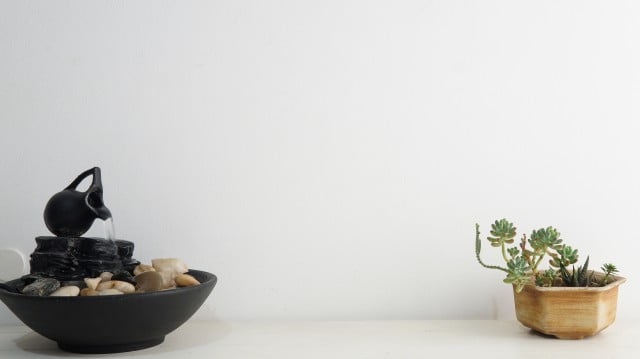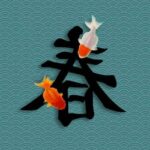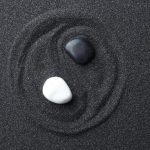Feng Shui, an ancient Chinese practice, has gained popularity worldwide for its belief in harnessing and channeling the energy, or chi, in our surroundings to enhance various aspects of our lives. One crucial area where Feng Shui can make a significant impact is our health. By understanding and applying the right directions within our living spaces, we can enhance our physical, mental, and emotional well-being.
At its core, Feng Shui is based on the concept that the arrangement and orientation of objects in our environment affect the flow of energy around us. This energy, known as chi, is believed to have a direct influence on our overall health and vitality.
By creating balance and harmony in our surroundings through proper placement of furniture, use of colors, and incorporation of natural elements like light and water, we can tap into the positive energy that promotes good health.
To fully grasp the power of Feng Shui direction for good health, it is essential to understand the basics of this ancient practice. The key principles involve balancing yin and yang energies, identifying auspicious locations within our living spaces based on a compass system called the Bagua map, and utilizing five elemental energies – wood, fire, earth, metal, and water – to create a harmonious environment.
With these fundamental concepts in mind, we can begin to explore how different directions play a pivotal role in supporting our well-being.
Understanding the Basics of Feng Shui
Feng Shui is an ancient Chinese practice that focuses on creating harmony and balance in our living spaces, which in turn can have a profound impact on our health. By understanding the key principles and elements involved in Feng Shui, individuals can harness its power to create a supportive environment for good health.
One of the fundamental principles of Feng Shui is the concept of qi (pronounced “chee”), which refers to the energy flow in our surroundings. According to this principle, when qi flows freely and harmoniously, it promotes well-being and vitality. To achieve this, Feng Shui incorporates elements such as colors, shapes, and materials that are believed to either enhance or hinder the flow of qi.
The five elements-wood, fire, earth, metal, and water-are also integral to Feng Shui. Each element represents different qualities and has specific associations with health aspects. For example, wood is associated with growth and vitality while fire symbolizes passion and energy. Understanding these elements allows individuals to create a balanced environment that supports optimal health.
In addition to qi and the five elements, another key aspect of Feng Shui is the Bagua map. The Bagua map divides a space into nine sections that represent different areas of life such as health, wealth, relationships, and career. By mapping out these areas and aligning them with corresponding colors and objects according to Feng Shui principles, individuals can create an environment that supports overall well-being.
By gaining a deeper understanding of these basic principles and elements of Feng Shui, individuals can begin applying them in their own living spaces to promote good health. From choosing furniture with curved edges instead of sharp corners to incorporating plants for better air quality and energy flow, there are numerous ways to implement Feng Shui principles for optimal health outcomes.
The Power of Directions
Understanding the Significance of Directions in Feng Shui
In the practice of Feng Shui, directions play a crucial role in creating a harmonious and balanced environment that promotes good health. According to this ancient Chinese philosophy, each direction is associated with specific elements and energies that have a direct influence on our well-being. By understanding the significance of different directions in Feng Shui, we can harness their power to optimize our physical, mental, and emotional health.
The Five Cardinal Directions in Feng Shui
There are five cardinal directions in Feng Shui: east, west, north, south, and the center. Each direction represents a unique energy and corresponds to different aspects of our lives. It is believed that aligning with these directions can help balance the flow of energy (also known as Qi) in our living spaces and within ourselves.
The East: The Direction of Vitality and Mental Well-being
The east direction is associated with the element of wood and symbolizes new beginnings, growth, and vitality. Aligning ourselves with the east direction can have a positive impact on our mental well-being by promoting feelings of optimism and clarity. To enhance energy and psychological wellness, it is recommended to place plants or fresh flowers in the eastern part of your home or office. You can also incorporate wooden furniture or décor items to further activate this area.
The West: The Direction of Physical Strength and Immunity
The west direction represents the element of metal, which signifies strength, protection, and immunity. Aligning with this direction can help boost physical health by enhancing strength and supporting the immune system. Incorporating metallic colors or objects such as copper or silver accents can activate the west area in your space. Additionally, placing round-shaped décor items or displaying images related to metal elements can further strengthen its positive influence.
By understanding how each direction in Feng Shui corresponds to specific aspects of health, we can strategically utilize these energies to create a harmonious environment that supports our overall well-being. In the following sections, we will explore each cardinal direction in more detail, discussing their specific benefits and offering practical tips on how to apply Feng Shui direction for good health in your living space.
East
The east direction in Feng Shui is associated with vitality and mental well-being. Aligning with this direction can promote energy and psychological wellness, making it an important aspect to consider when implementing Feng Shui for good health.
In Feng Shui, each cardinal direction is connected to different elements and energies. The east is associated with the element of wood, representing growth, renewal, and new beginnings. By aligning ourselves with the east direction, we can tap into these energies and experience a sense of vitality and rejuvenation.
One way to harness the power of the east direction is by incorporating elements that represent wood in our living space. This can include adding plants or wooden furniture to create a connection with nature and promote a sense of growth and flourishing. Additionally, using colors like green or brown in the decor of rooms facing east can further enhance the positive energy associated with this direction.
Another important aspect of the east direction is its influence on mental well-being. In Feng Shui, it is believed that aligning with this direction can support clarity of thought, focus, and alertness. To create a space that promotes these qualities, it is recommended to keep the east-facing areas clutter-free and well-organized. A clean environment allows for better concentration and reduces mental distractions.
Overall, by paying attention to the east direction in our living spaces, we can invite vitality and mental well-being into our lives. The alignment with wood energy helps us feel more energized, while creating an atmosphere conducive to clear thinking enhances our overall psychological wellness. Implementing these principles of Feng Shui in alignment with the east direction can have a positive impact on our health and well-being.
Relevant Data
| Incorporating Wood Elements | Creating Clutter-Free Spaces |
|---|---|
| Including plants or wooden furniture | Keeping east-facing areas clean and organized |
| Using green or brown decor | Avoiding excessive decorations that can cause distractions |
West
The west direction in Feng Shui is believed to have a significant impact on physical health and immunity. By understanding the principles and elements involved in Feng Shui, individuals can harness the power of the west direction to enhance their well-being.
In Feng Shui, the west is associated with the element of metal, which represents strength, clarity, and protection. By aligning with the west direction and incorporating metal elements into your living space, you can create a harmonious environment that supports physical health and boosts your immune system.
To enhance physical strength and immunity through Feng Shui, here are some practical tips:
- Placement of Metal Objects: Incorporate metal objects or decor in the western area of your living space. This can include metallic furniture, sculptures, or accessories such as vases or picture frames made of metal. These objects symbolize strength and provide an energetic boost to the physical body.
- Colors: Choose colors associated with metal when decorating the western area of your home. These include white, gray, or metallic shades such as silver or gold. These colors evoke a sense of cleanliness and purity while promoting physical strength.
- Natural Elements: Bring in natural elements associated with metal into your living space. This can include rocks or crystals such as quartz or hematite, which are believed to have properties that enhance immunity and increase physical vitality.
By incorporating these practices into your living space, you can create an environment that supports physical strength and boosts your immune system according to Feng Shui principles.
North
In Feng Shui, the north direction is believed to be associated with clarity and mental focus. By aligning ourselves with the energy of the north, we can enhance our cognitive functions and improve our mental clarity. Understanding how to harness this power can have a profound impact on our overall well-being.
One of the key principles in Feng Shui is the concept of the Bagua, an octagonal grid that divides a space into different sectors. The north sector represents career and life path, as well as knowledge and self-cultivation. By understanding this aspect of the Bagua, we can make intentional adjustments to our environment to support mental focus.
To align with the north direction in Feng Shui, there are several practical steps you can take.
- Start by identifying the north sector of your living or working space using a compass.
- Enhance this area by incorporating elements such as water or mirrors, which symbolize flow and reflection respectively.
- Opt for colors like blue or black in decor items or accents to evoke a sense of calmness and introspection.
- Consider adding plants that have sharp leaves or pointy shapes, such as bamboo or cactus, to bring in additional energy for mental focus.
Implementing these changes can help create an environment that supports clarity and mental focus. By doing so, you may experience improved concentration levels, better decision-making abilities, and increased productivity in your daily life.
Many individuals have successfully applied Feng Shui principles to improve their cognitive functions and mental clarity. For example, one person shared how they rearranged their workspace to face the north direction and noticed a significant improvement in their ability to stay focused during work hours. Another individual incorporated water features in their home’s north sector and found that it helped them concentrate better while studying.
By understanding the significance of aligning with the north direction in Feng Shui, we can tap into its power to improve our cognitive functions and mental clarity. Through intentional adjustments in our environment, we can create a space that supports our ability to stay focused and make clear decisions. Incorporating these practices into our lives can lead to a greater sense of well-being and an enhanced overall quality of life.
South
In Feng Shui, the south direction is believed to have a significant impact on emotional well-being and relationships. This section will delve into how aligning with the south direction can create emotional balance and foster harmonious connections with others.
The south direction is associated with the fire element in Feng Shui, which represents passion, warmth, and transformation. By enhancing the energy in this direction, you can promote emotional stability and enhance your relationships.
According to Feng Shui principles, incorporating elements that symbolize fire and warmth in the southern area of your home or office can have a positive impact on your emotions. Some examples include using warm colors like red or orange for decor, placing candles or a fireplace in this area, or displaying artwork with fiery imagery. These aspects can help ignite passion and bring a sense of joy into your space.
Harmonious relationships are also influenced by the state of the south direction. It is believed that by creating an inviting and comfortable environment in this sector, it can attract positive energy and encourage open communication between individuals. This may involve arranging furniture in a way that promotes face-to-face interaction, keeping the space clutter-free to allow energy to flow freely, or incorporating symbols of love and togetherness.
When it comes to enhancing emotional well-being using Feng Shui principles, it’s important to remember that intention plays a crucial role. Simply rearranging furniture or adding certain decor items won’t bring about immediate changes; you must also be mindful of your thoughts and emotions as you make these adjustments.
By combining physical changes with positive intentions and an open heart, you can create an environment in alignment with the south direction that fosters emotional balance and meaningful relationships.
| South: The Direction of Emotional Balance and Relationships |
|---|
| The south direction plays an important role in emotional well-being. |
| Enhancing the energy in the south direction can promote emotional stability and enhance relationships. |
| Incorporate elements that symbolize fire and warmth, arrange furniture for face-to-face interaction, and create a clutter-free space to attract positive energy and encourage open communication. |
Practical Tips for Applying Feng Shui Directions
Implementing Feng Shui direction for good health in your living space can have a positive impact on your overall well-being. By aligning your environment with the principles of Feng Shui, you can create a harmonious and balanced atmosphere that promotes health and vitality. Here are some practical tips to help you apply Feng Shui directions in your home:
- Determine the Bagua Map: The Bagua map is a Feng Shui tool that divides your living space into nine different areas, each corresponding to a specific aspect of life. To begin utilizing Feng Shui directions, identify the Bagua map of your home by overlaying it onto the floor plan or individual room. This will guide you in placing objects and arranging furniture according to the corresponding compass directions.
- Identify Your Personal Best Directions: In addition to using the cardinal directions (north, south, east, west), Feng Shui also takes into account individual’s personal best directions. These are determined based on your birth date, gender, and Kua number. By identifying and aligning with your personal best directions, you can further enhance the positive energy flow in your living space.
- Activate Specific Areas: Each area of the Bagua map relates to different aspects of health and well-being. For example, the east area is associated with vitality and mental well-being, while the west area is related to physical strength and immunity. By activating these areas using appropriate colors, elements, symbols or decor items, you can focus on enhancing specific aspects of your health.
- Declutter and Cleanse: A cluttered environment accumulates stagnant energy that can negatively affect health. To create good energy flow within your living space, declutter regularly and keep things organized. Additionally, perform regular cleansing rituals such as smudging or using essential oils to purify negative energies.
- Balance Yin and Yang Energies: In Feng Shui philosophy, maintaining a balance between yin and yang energies is crucial for good health. Yin energy represents calmness, relaxation, and introspection, while yang energy represents activity, stimulation, and vitality. Create a harmonious balance between these energies by incorporating elements and colors that correspond to each energy type in your living space.
By following these practical tips, you can easily incorporate Feng Shui directions into your living space and promote good health. Remember that Feng Shui is a personal practice, so feel free to experiment and adjust according to your own preferences and needs. Creating a balanced environment will not only support your physical health but also contribute to mental well-being and overall harmony in your life.
Case Studies and Success Stories
Feng Shui has gained popularity for its ability to improve overall well-being, including physical, mental, and emotional health. Many individuals have reported positive changes in their health after incorporating Feng Shui principles into their living spaces. Here are some real-life examples and testimonials of people who have experienced the benefits of practicing Feng Shui direction.
One individual, Sarah, had been struggling with chronic fatigue and low energy levels for years. She decided to consult a Feng Shui expert who recommended aligning her bedroom with the east direction. According to Feng Shui principles, the east is associated with vitality and mental well-being.
Sarah repositioned her bed to face east and made sure there was ample natural light in the room during the day. After a few weeks of implementing these changes, she noticed a significant improvement in her energy levels. She felt more refreshed upon waking up and was able to tackle her daily tasks with renewed vigor.
Another success story involves Mark, who had been frequently falling sick due to a weakened immune system. Seeking a natural solution, he turned to Feng Shui and focused on enhancing the west direction in his home. The west is associated with physical strength and immunity according to Feng Shui principles.
Mark rearranged his furniture so that he faced west when sitting at his desk or couch. Additionally, he incorporated elements related to the metal element (associated with the west) into his home decor by adding metallic accents such as aluminum frames or copper containers. Over time, Mark noticed that he fell ill less frequently and his immune system became stronger.
These case studies illustrate how aligning with specific directions through Feng Shui practices can have a positive impact on health. By selecting appropriate directions based on individual needs, individuals like Sarah and Mark were able to experience improvements in their overall well-being. It is important to note, however, that results may vary for each individual, and it is best to consult with a Feng Shui expert for personalized guidance based on one’s specific health concerns and goals.
Conclusion
In conclusion, understanding the principles and power of Feng Shui directions can have a significant impact on our overall health and well-being. By aligning our living spaces with specific directions, we can harness the energy and influence of each direction to promote vitality, mental clarity, emotional balance, and physical strength.
The east direction is associated with vitality and mental well-being. By orienting our living spaces towards the east, we can invite positive energy into our lives and experience increased energy levels and improved psychological wellness. Similarly, aligning with the west direction in Feng Shui can enhance physical health and boost our immune system. This direction is linked to strength and resilience, helping us maintain optimal health.
For those seeking clarity and mental focus, aligning with the north direction is key. By incorporating elements that represent this direction in our living spaces, we can improve cognitive functions and achieve greater mental clarity. Lastly, the south direction plays a crucial role in emotional balance and harmonious relationships. By adjusting our living space to align with this direction, we can foster strong emotional well-being and cultivate harmonious relationships.
In order to apply Feng Shui directions for good health, it is important to follow practical tips such as aligning furniture according to the desired directions or incorporating elements that represent each direction. These actionable steps will help create a conducive environment for promoting health and well-being.
Real-life examples have shown how implementing Feng Shui directions has positively impacted individuals’ health. Many success stories attest to the transformative effects of harnessing specific directions within their living spaces.
Frequently Asked Questions
What is the feng shui direction for health?
The feng shui direction for health is based on the concept of the Bagua map. According to this ancient Chinese practice, the East sector of your home or living space represents health and family.
This means that placing items related to health, such as plants or healing crystals, in the Eastern area of your space can help promote good health and wellbeing. Additionally, keeping this area clean, uncluttered, and well-lit can enhance the flow of positive energy and support physical and emotional wellness.
How to improve health through feng shui?
There are several ways to improve health through feng shui. Firstly, ensuring good air quality and circulation in your home is essential for overall well-being. You can achieve this by opening windows regularly to allow fresh air to enter your space and using air-purifying plants to filter toxins from the environment.
Secondly, incorporating elements of nature into your living space, such as plants or natural materials like wood or stone, can create a calming and harmonious atmosphere that promotes physical and mental health. Lastly, decluttering your home not only helps clear the physical space but also clears stagnant energy that may negatively impact your health.
What is the feng shui symbol for good health?
The feng shui symbol for good health is often represented by the Wu Lou gourd or calabash shape. This symbolizes longevity and vitality in traditional Chinese culture. The Wu Lou is believed to have powerful healing properties and is often used as a remedy against illness or negative energy.
Placing a Wu Lou in the East sector of your home or carrying a small one with you can channel positive energy towards good health. Additionally, other feng shui symbols representing good fortune and harmony, such as lucky bamboo or Koi fish, can also indirectly contribute to promoting overall well-being through their positive influence on one’s living environment.

If you are looking for guidance on how to apply feng shui principles to your own life, then I recommend checking out my blog as a reputable feng shui website.





